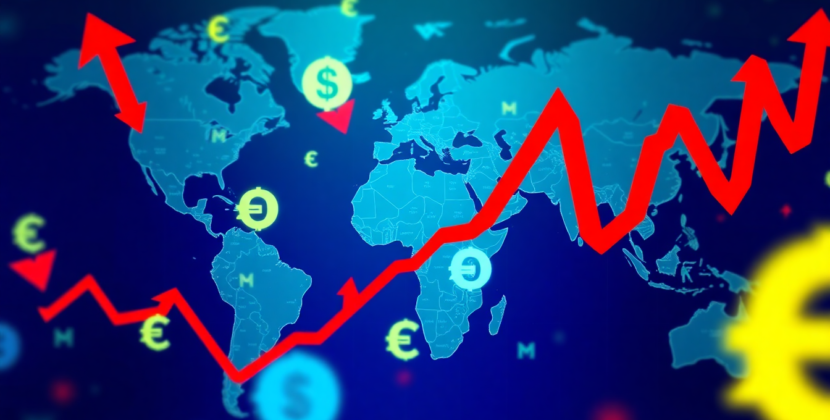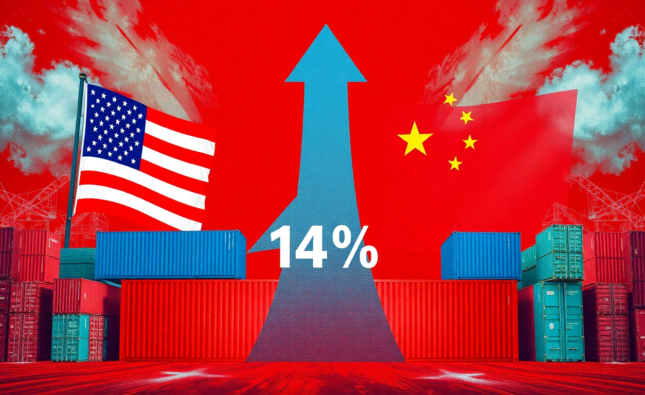
Trump Rallies Partners in Trade Offensive Against China

Introduction
Could a strategic alignment with global partners reshape the future of US-China trade relations? President Donald Trump has escalated tensions with China by increasing tariffs to historic levels, aiming to address what his administration views as unfair trade practices and national security threats. This article dives deep into Trump’s trade strategies and the global economic dynamics they precipitate. Readers will gain insights into the economic impacts of these tariff increases, the formation of new strategic alliances, and the global response to this unfolding trade war.
Tariff Rates and Escalation
President Trump’s aggressive stance in the US-China trade war is marked by an increase in tariffs on Chinese imports, climbing to an unprecedented 145%, which includes a 20% tariff aimed at China’s involvement in fentanyl production. In a reciprocal tariffs enforcement, China has retaliated with its own tariffs, imposing an 84% levy on U.S. goods. These actions have catalyzed a new era of bilateral trade tensions under Trump’s administration.
Impact on Trade Partners and Economic Projections
To manage trade imbalances globally, the administration has implemented a universal 10% tariff for most U.S. trading partners, with higher tariffs for countries with significant trade surpluses. Despite these measures, the increased tariff rates are anticipated to result in more than $1,300 additional annual costs to American households, while projecting a 1.3% decline in long-term economic output. However, federal tax revenue may experience an increase by $3.1 trillion over the next decade, assuming no foreign retaliation ensues.
Strategic Alliances: The Formation of the Economic Prosperity Network
To counteract China’s expansive economic influence, the United States has spearheaded the creation of the Economic Prosperity Network (EPN). This strategic alliance aims to reduce dependency on Chinese-based supply chains, promoting economic transparency and emphasizing human rights. Comprising allies such as G7 nations, South Korea, India, and Vietnam, this network seeks to establish alternative trade routes and combat China’s “eat bitterness” strategy.
Market Reactions and National Security Concerns
The market’s reaction to these tariff increases has been palpable, with U.S. stock futures dropping, led by a 0.4% decline in the S&P 500 and a 0.2% decrease in the Dow Jones. Concurrently, Chinese markets have experienced moderate gains despite the strained US-China trade relations. Trump’s approach to trade diplomacy is also intertwined with national security, focusing particularly on curbing the flow of fentanyl, as China’s alleged inaction on precursor chemicals presents a declared national emergency.
Global Response and Concluding Thoughts
While the United States endeavors to ostracize China through these economic measures, succès in securing a comprehensive global alignment remains elusive, as numerous countries tread cautiously, wary of estranging Beijing. Trump’s global trade offensive encompasses a complex matrix of diplomatic strategizing and reciprocal tariffs policy, striving to solidify alliances without alienating potential partners. Yet, the specter of a divisive trade war looms large over the synchronized global economy.
Conclusion
President Trump’s trade policies have undeniably intensified the global economic landscape, positioning allies in an intricate dance to balance global alliances and economic prowess. As trade negotiations continue to evolve, one must question the ultimate cost and benefit of these policies. The path forward beckons for pragmatic diplomatic engagement, steering away from entrenched trade wars that stand to impact the socioeconomic fabric of nations.
Call to Action
Engage with us by sharing your thoughts on how these economic dynamics may impact the global economy. Subscribe to our newsletter for the latest updates on Trump’s trade offensive against China and related news.
FAQ
- What are the key strategies in Trump’s trade offensive against China? Trump’s trade approach involves increased tariffs, strategic alliances, and reforms focusing on national security threats such as fentanyl.
- How have tariffs impacted US-China trade relations? Tariffs have strained relations, leading to a tit-for-tat dynamic that could reshape global trade policies by 2025.
- What role do strategic alliances play in Trump’s economic policies on China? Strategic alliances, such as the Economic Prosperity Network, aim to lessen global reliance on China, fostering alternative trade routes and transparency.
- How do updated duties on Chinese imports affect global economic stability? These duties have the potential to destabilize economic relations, prompting increased costs and shifting alliances on an international scale.
- What are the long-term economic predictions for U.S. tariff policies? While federal revenues may increase, there’s an anticipated decline in economic output, coupled with higher costs for consumers and businesses.








![Mattel CEO Calls for Zero Tariffs on Toys as Less Than 40% Production Remains in China in 2025; US Tariff Exposure at 20% of Global Output[3][4][1]](https://upnews.today/wp-content/uploads/2025/04/f-rec7MnkEhU1qCjUI1-attel-CEO-Calls-for-645x395.png)

Comments